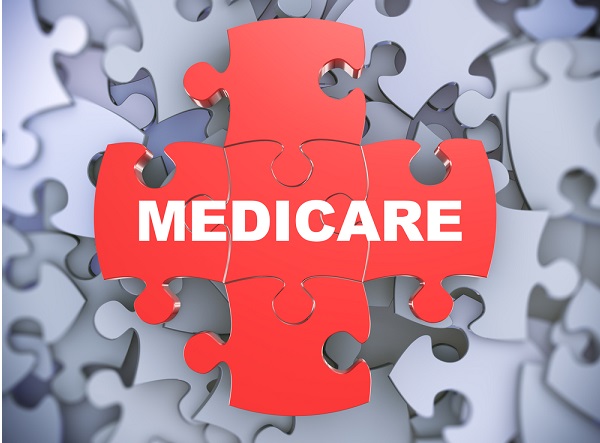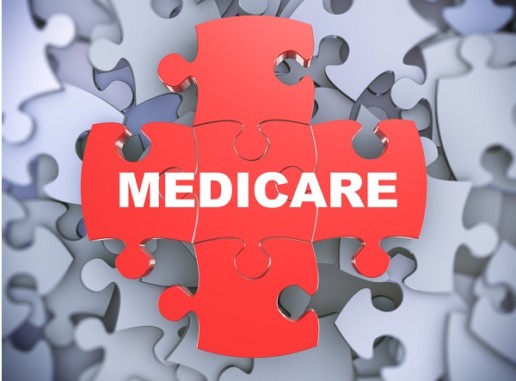How Hospitals Can Meet the Needs of Non-Covid Patients During the Pandemic
As there has been many waves of coronavirus cases for many months, health care has seemed to only point to helping those who have been impacted by the virus. Although there are still many cases that test positive for the virus, there has been a dramatic decline in other non-COVID related health issues. Read this blog post to learn more.
During the initial wave of the Covid-19 pandemic, hospitals worldwide diverted resources from routine inpatient critical care and outpatient clinics to meet the surge in demand. Because of the resulting resource constraints and fear of infection, clinicians and non-Covid patients deferred “non-urgent” visits, evaluations, diagnostics, surgeries and therapeutics. Indeed, early in the pandemic physicians and leading public health officials noted a dramatic decline in non-Covid-related health emergencies, including upwards of a 60% decrease in patients with acute myocardial infarctions and strokes.
Drawing on key principles from operations management and applying a health-systems perspective, we propose four strategies to facilitate care of non-Covid patients even as hospitals are stretched to absorb waves of patients with Covid-19.
1. Innovate outpatient management to reduce demand at downstream bottlenecks.
To reduce future bottlenecks in emergency departments (EDs) and hospitals, outpatient clinicians should expand their proactive management of patients at high risk of needing acute or inpatient services, such as those with poorly managed hypertension or diabetes, and triage patients with acute needs to EDs now in order to reduce more serious complications later. This will help reduce potential future spikes in demand on EDs and inpatient beds from non-Covid patients.
While most clinicians have rapidly adopted some form of telemedicine, they will need to increase their digital engagement with high-risk patients in a more targeted fashion. Clinicians should evaluate their patient panels to identify high-risk individuals and initiate telemedicine visits, rather than relying on patients to initiate contact, similar to the process for proactive disease management used by several community health care organizations.
Although high-risk patients will vary by specialty, targeted populations may include patients recently discharged from the hospital and those at high risk for hospitalization, including those with uncontrolled heart failure or active malignancy. To facilitate remote patient monitoring of high-risk patients, clinicians may opt to send telehealth kits tailored to patients’ medical and technological needs. These kits may include connected health devices such as blood pressure monitors, pulse oximeters, and heart rate monitors, and even mobile technology devices such as tablets or smart phones. To most effectively leverage telemedicine during the pandemic, clinicians must also promote multidisciplinary virtual collaboration across primary care clinicians, specialists, social workers, home health clinicians, administrative support, and patients and their caregivers.
2. Combine essential non-Covid inpatient services across hospitals.
To balance demand across hospitals, public health officials should apply a version of the logistics strategy known as “location pooling,” combining demands from multiple locations. Rather than each hospital in a region redundantly providing the full suite of essential inpatient non-Covid clinical services, each of these services should be concentrated at one location. For example, each region should have a single designated cancer center, transplant center, stroke center, and trauma center. Implementing this strategy is fraught with challenges as hospitals are currently organized independently and compete with one another for patients and revenue. Nevertheless, during the initial Covid-19 wave, several hospitals in Boston collaborated to share data on the availability of hospital beds to efficiently route patients based on their clinical need and the available capacity. And centralization of acute stroke care, in which patients are taken to central specialty hospitals rather than the nearest hospital, demonstrates both the feasibility and potential improved outcomes of utilizing this approach in several countries including the United States, Canada, the Netherlands, Denmark, and Australia.
Crises require all possible realizations of economies of scale. Location pooling mitigates variability in service-specific demand faced by each hospital. As demand falls for specific non-Covid services at an individual hospital (e.g., for acute stroke care), hospital administrators can close those services and repurpose the specialty capacity to care of Covid-19 patients with underlying conditions, as discussed below. If all hospitals implement this strategy, not all non-Covid services will be available at every hospital. However, location pooling draws demand from across hospitals, ensuring that as a given hospital loses some patients it gains others, allowing it to maintain sufficient census to remain fiscally viable.
Centrally coordinated regional organization, similar to mass casualty planning, is critical to ensure that each essential service remains fully operational for routine emergencies, while adapting to dynamic changes in the region’s hospital capacity. The number of hospitals to include in location pooling should be determined by weighing the tradeoff of efficiency gains from pooling across more locations versus inefficiencies from increased travel time incurred by patients and emergency medical services.
3. Group hospitalized Covid-19 patients by their underlying clinical conditions.
At the same time that hospitals should be location-pooling specialty services for non-Covid patients, to the extent possible they should place their Covid-19 patients who have serious underlying health issues (e.g., cardiac conditions) with other Covid-19 patients with the same condition. In each of these “cohorted wards,” redeployed clinical staff from the relevant specialty service, such as cardiology, can provide essential specialty care alongside clinicians addressing patients’ Covid-specific care needs.
While such cohorting limits efficiency gains from pooling all Covid-19 patients in one ward, it maintains specialty care for patients who still need it while reducing the additional inpatient capacity strain resulting from patients being dispersed across the hospital. Indeed, prior research demonstrates that displacing patients from cohorted specialty units is associated with prolonged hospital length of stay and more frequent readmissions.
4. Discharge patients into post-acute care based on Covid-19 status.
Nursing home, rehabilitation hospital, and long-term acute care facility leadership should collaborate to establish separate regional, specialized, post-acute care facilities for Covid-19 and non-Covid patients. Sending patients to specialized post-acute care facilities based on their Covid-19 status will facilitate discharge planning, improving patient flow out of the hospital for Covid-19 and non-Covid patients alike. This will relieve strain at ED and hospital bottlenecks while maintaining care quality. Furthermore, having dedicated post-acute care facilities for Covid-19 patients will preserve post-acute care capacity for those recovering from non-Covid illnesses, while lowering their risk of becoming infected.
Challenges to this model include ensuring timely access to Covid-19 testing and rapid test results to guide appropriate patient routing. To prevent discharge delays due to testing constraints, hospitals need to implement rapid tests more widely, and post-acute care facilities should designate quarantine areas for patients to receive care while awaiting results.
* * *
These strategies will undoubtedly be challenging to implement. But now is the time to rethink health care delivery and adopt operations management strategies with demonstrated success that are most promising. This will allow us to be better prepared for future waves of the Covid-19 pandemic.
SOURCE; Song, H.; Ezaz, G.; Greysen, S. Ryan.; Halpern, S.; Kohn, R. (14 July 2020) "How Hospitals Can Meet the Needs of Non-Covid Patients During the Pandemic" (Web Blog Post). Retrieved from https://hbr.org/2020/07/how-hospitals-can-meet-the-needs-of-non-covid-patients-during-the-pandemic
Medicare 101: A Quick Guide For Employers
Medicare is a governmentfunded health insurance program for those aged 65 and above, those under 65 with certain disabilities, and those with End State Renal Disease (ESRD) or Amyotrophic Lateral Sclerosis (ALS). Employers that offer group health insurance plans to their employees have an interest in learning how employees’ entitlement to Medicare benefits can affect the administration of those plans. We sat down to speak with Olivia Childs, a Senior Solutions Licensed Agent at Saxon Financial Services, to get some more information on Medicare for beginners.
When asked about the number one thing to keep in mind when trying to figure out your first steps with Medicare, Olivia commented, “Ask a licensed agent for assistance. Advertisements can be confusing, and everyone wants to make the right choice. Using my expertise, I take the fear out of the decision making, so my clients can make an informed decision concerning their healthcare.”

What are the different parts of Medicare?
- Part A is hospital insurance that helps cover inpatient care in a hospital, skilled nursing facility care, inpatient care in a skilled nursing facility (not custodial or long-term care), hospice care, and home health care. Most U.S. citizens qualify for zero premium Medicare Part A upon attainment of age 65.
- Part B is the actual ‘health’ coverage under Medicare. It helps cover physician visits, screenings and other aspects of out-patient medical care. Medicare Part B has a monthly premium to cover outpatient care which increases annually.
- Part C is a Medicare Advantage Plan. This is a plan that offers all of the benefits of Parts A and B, sometimes with Part D, through a private health insurer.
- Part D was established in 2003. Part D of the Medicare Program provides prescription drug coverage to Medicare beneficiaries. This drug coverage may be available in a standalone Prescription Drug Plan (PDP) or integrated with a Medicare Advantage Plan.
What is Original Medicare?
With original Medicare, your coverage is through Parts A and B. Part A includes inpatient and/or hospital coverage, while Part B includes outpatient and/or medical coverage. Through this type of Medicare, you are provided a red, white and blue card to show your providers when receiving treatment. While most doctors take Original Medicare coverage, it is important to check whether your provider participates. If you visit one that does,
then your Medicare card will limit how much you can be charged.
Through Original Medicare, you are responsible for a 20% coinsurance if you see a participating provider and after meeting your deductible. Some basic, key things to know about Original Medicare include that:
- For Medicare Supplement Insurance, you have the choice to pay an additional premium for a Medigap to cover Medicare cost-sharing.
- You do not need referrals to see a specialist.
- For drug coverage, you must sign up for a standalone prescription drug plan.
- It does not cover vision, hearing, or dental services.
What is Medicare Advantage?
Unlike Original Medicare, Medicare Advantage are private plans that contract with the federal government to provide Medicare benefits. These plans are also known as Medicare private health plans or Part C. Some of the most common types of plans are:
- Health maintenance Organizations (HMOs)
- Preferred provider Organizations (PPOs)
- Private Fee-For-Service (PFFS)
If you join a Medicare Advantage Plan, you will not use the red, white, and blue card when you go to the doctor or hospital. Instead, you will use the membership card your plan sends you to get health services covered. Plans must provide the same benefits offered by Original Medicare, but they may apply different rules, costs, and restrictions. They also may offer certain benefits that Medicare does not cover. Just like Original Medicare, there are some key items to be aware of:
- Your cost-sharing varies depending on plan. Usually pay a copayment for in-network care. Plans may charge a monthly premium in addition to Part B premium.
- You cannot enroll in a Medigap plan.
- You can typically only see in-network providers.
- You will also typically need a referral to see a specialist.
- For drug coverage, in most cases, the plan provides prescription drug coverage (you may be required to pay higher premium).
- It may cover additional services, including vision, hearing, and/or dental (additional benefits may increase your premium and/or other out-of-pocket costs).
- You will have an annual out-of-pocket limit. Plan pays the full cost of your care after you reach the limit.
If you sign up for Original Medicare and later decide you would like to try a Medicare Advantage Plan–or vice versa–be aware that there are certain enrollment periods when you are allowed to make changes.
Employer Requirements
Employers are required to file annual Centers for Medicare and Medicaid Reporting and Employee-Notice Distribution letters even if one employee has coverage under Medicare Parts A, B, or C. Usually companies receive letters from their insurance companies asking for a Federal Tax Identification number and the group size of employees each year.
If your company has 19 or fewer full- and part-time employees, Medicare is almost always primary. Here, it is essential that employees turning 65 enroll in Medicare Parts A and B. If they do not, generally they will have to pay anything that Medicare would have covered. If your company is larger, various rules determine whether your group plan is the primary or secondary payer. MSP requirements also apply for Medicare-eligible employees who are disabled or have end-stage renal disease.
Once per year, written notice distribution is required to all Medicare-eligible employees. This must inform the employee whether the employer’s prescription drug coverage is ‘creditable’ or ‘noncreditable.’ Notice can be sent electronically, but it is often easier to distribute in written format. These need to be sent before October 31.
It is a good idea for employers to provide employees with written details about their employer-provided coverage, which will help them decide how to handle their Medicare choices.
How does it work with COBRA?
COBRA coverage is usually offered when leaving employment; if the employee has COBRA and Medicare coverage, Medicare is the primary payor. If an employee has Medicare Part A only, signs up for COBRA coverage and waits until the COBRA coverage ends to enroll in Medicare Part B, he or she will have to pay a Part B premium penalty.
Employees should be disenrolled in COBRA once they turn 65. A number of Medicare beneficiaries have delayed enrolling in Medicare Part B, thinking that because they are paying for continued health coverage under COBRA, they do not have to enroll in Medicare Part B. COBRA-qualified beneficiaries who have delayed enrollment in Medicare Part B do not qualify for a special enrollment period to enroll in Part B after COBRA coverage ends.
According to the Department of Labor Bureau of Labor and Statistics, the number of workers age 65 and older has increased dramatically since the late 1990s. With that trend expected to continue, companies have an excellent opportunity to assist employees in their health insurance decisions. Navigating the ever-changing Medicare rules can be tricky.
However, with the help of a qualified Medicare specialist, the process can be rewarding for the employer and employees.
Positioning for Long-Term Success
Offering Medicare coverage to your employees can be a daunting, confusing, and tiring task – especially when you go about it alone. While articles like this one can be helpful in understanding what Medicare is, the logistics of actually implementing it as a solution for your employees is a whole other story.
Saxon Financial Advisors creates strategies that are built around you and your vision for the future. The key is to take the first step of reaching out to a professional and then letting us guide you along the path to a confident future. We don’t stop at just a plan. We take the journey with you, reassessing your life situation, changing needs and goals and ensuring that your plan continues to meet your future needs in an ever-changing world. We offer several helpful services to businesses, just like yours, including:
- Risk Management
- Tax Planning
- Education Planning
- Retirement Planning
- Estate Planning
- Business Planning
People are your most valued asset and our greatest reward. Our compassion for people drives us to operate differently, assessing the needs of the population alongside the vision and goals of your organization. At Saxon, we truly listen, engage, understand and advise solutions to help meet your overall company goals. Employee Benefits will have an impact on your organization from recruitment, retention and population wellness to productivity and your bottom line. To us, it isn’t the size of your organization that matters most, but rather the needs of the people within it.
For more information, contact Olivia Childs, a Senior Solutions Licensed Agent, at (513)904-5955 or ochilds@gosaxon.com.
About Your Advisor
Olivia Childs is a Senior Solutions Advisor at Saxon Financial. She graduated from the University of Cincinnati with a degree in Organizational Leadership. She was involved in the Human Resources department and a member of HR Succeeds, a mentor program with professionals and students. In her free time, Olivia volunteers at the Cincinnati Epilepsy Foundation. When it comes to helping her clients with Medicare, Olivia pointed out, “Healthcare is personal. I love being a resource for my clients to use to help them make the best decision concerning a Medicare plan.”
Not Connected with or endorsed by the U.S. government or the federal Medicare program.
Reminder: Medicare Part D Notices Are Due to CMS by Feb. 29
The federal Centers for Medicare & Medicaid Services (CMS) require disclosures regarding coverage that is either "creditable" or "non-creditable" each calendar year. The notice and disclosure deadline for those who provide prescription drug coverage is due February 29, 2020. Read this blog post to learn more about the Medicare Part D notice.
Each year, group health plan sponsors that provide prescription drug coverage to individuals eligible for Medicare Part D must disclose to the federal Centers for Medicare & Medicaid Services (CMS) whether that coverage is "creditable" or "non-creditable." Prescription drug coverage is "creditable" when it is at least actuarially equivalent to Medicare Part D prescription drug coverage.
The disclosure obligation applies to all plan sponsors that provide prescription drug coverage, even those that offer prescription drug coverage only to active employees and not to retirees. Calendar year plans must submit this year's disclosure by Feb. 29, 2020.
Background
Individuals who fail to enroll in Medicare Part D prescription drug coverage when first eligible may be subject to late enrollment penalties if they go 63 consecutive days or longer without creditable prescription drug coverage. Because of this potential penalty, both Medicare Part D-eligible individuals and the CMS need to know whether a group health plan's prescription drug coverage is creditable or non-creditable.
Plan sponsors that provide prescription drug coverage must furnish Part D-eligible individuals with a notice disclosing the creditable or non-creditable status of their coverage before the beginning of the Medicare Part D annual enrollment period and at certain other times.
Plan sponsors must also disclose to CMS, on an annual basis and at certain other times, whether the coverage they provide is creditable or non-creditable. The submission deadline for this year's disclosure to CMS by calendar year plans is approaching.
Creditable Coverage Disclosures to CMS
Plan sponsors generally must disclose creditable coverage status to CMS within 60 days after the beginning of each plan year. Disclosure is made using the Disclosure to CMS Form on the CMS website. An entity that does not offer outpatient prescription drug benefits to any Part D-eligible individual on the first day of its plan year is not required to complete the CMS disclosure form for that plan year. Plan sponsors that contract directly with Medicare as a Part D plan or that contract with a Part D plan to provide qualified prescription drug coverage are also exempt from the CMS disclosure requirement for individuals who participate in the Part D plan.
In addition to the annual disclosure, plan sponsors must submit a new disclosure form to CMS within 30 days following any change in the creditable coverage status of a prescription drug plan. This includes both a change in the coverage offered so that it is no longer creditable (or non-creditable) and the termination of a creditable coverage option. A new disclosure form must also be submitted to CMS within 30 days after the termination of a prescription drug plan.
The disclosure requirement applies to all plan sponsors that provide prescription drug coverage to Part D-eligible individuals, even those that do not make prescription drug coverage available to retirees.
Calendar year plans must submit this year's disclosure to CMS by Feb. 29, 2020.
| Is disclosure required If an employer doesn't offer retiree coverage? | ||
| All Part D-eligible individuals covered under an employer's prescription drug plan — regardless of whether the coverage is primary or secondary to Medicare Part D — should be included in the disclosure. "Part D-eligible individuals" are generally age 65 and older or under age 65 and disabled, and include active employees and their dependents, COBRA participants and their dependents, and retirees and their dependents. Even employers without retiree coverage may need to file the disclosure. |
Information Needed to Complete Disclosure
In preparing the disclosure to CMS, plan sponsors need to:
- Identify the number of prescription drug options offered to Medicare-eligible individuals. This is the total number of benefit options offered, excluding any benefit options the plan sponsor is claiming under the retiree drug subsidy (RDS) program (i.e., benefit options for which the plan sponsor is expected to collect the subsidy) or that are employer group waiver plans (EGWPs).
For example, a plan sponsor with a PPO and an indemnity option covering actives and an option for retirees for which it is receiving RDS would report two prescription drug options. - Determine the number of benefit options offered that are creditable coverage and the number that are non‑creditable.
- Estimate the total number of Part D-eligible individuals expected to have coverage under the plan at the start of the plan year (or, if both creditable and non-creditable coverage options are offered, estimate the total number of Part D-eligible individuals expected to enroll in each coverage category). This includes Part D-eligible active employees, retirees, and disabled individuals and any of their Part D-eligible dependents and any individuals on COBRA who are Part D eligible.
The estimate should not include any Part D-eligible retirees being claimed under the RDS program or retirees in an EGWP (because that coverage is Medicare Part D coverage).
Individuals who will become Part D eligible after the start of the plan year should not be included in the count for that year. However, they must be provided a notice of creditable or non-creditable coverage prior to their initial Part D enrollment period. - Provide the most recent calendar date on which the required notices of creditable or non-creditable coverage were provided.
| Why doesn't the disclosure requirement apply to EGWPs or retiree plans where employer is receiving RDS payments? | ||
| Employers that provide prescription drug coverage through a Medicare Part D employer group waiver plan are exempt from the disclosure requirement because an EGWP is Medicare Part D coverage.
An employer participating in the retiree drug subsidy program must have already certified to CMS that its drug coverage is creditable. |
In Closing
Plan sponsors should review the instructions carefully before completing the Disclosure to CMS Form to make sure that they have all necessary information, and calendar year plans should report the information by Feb. 29, 2020.
Richard Stover, FSA, MAAA, is a principal at HR advisory firm Buck. Leslye Laderman, JD, LLM, is a principal in the Knowledge Resource Center at Buck. This article originally appeared in the Feb. 5, 2020 issue of Buck's For Your Information. © 2020 Buck Global LLC. All rights reserved. Republished with permission.
SOURCE: Stover, R.; Laderman, L. (06 February 2020) "Reminder: Medicare Part D Notices Are Due to CMS by Feb. 29" (Web Blog Post). Retrieved from https://www.shrm.org/resourcesandtools/hr-topics/benefits/pages/reminder-medicare-part-d-notices-due-to-cms.aspx
New drug plan would curb exorbitant pharmaceutical costs
California Governor, Gavin Newsom has proposed a pharmaceutical plan to cut costs of pharmaceutical prescriptions. It was suggested that using low prices obtained by the state, could help other buyers. Read this blog to learn about how California Governor is purposing an attempt to lower costs for California residents.
California’s governor unveiled plans to establish a state-run generic-drug wholesaler, as part of a series of measures that together would constitute one of the furthest-reaching attempts to curb pharmaceutical costs in the U.S.
Gov. Gavin Newsom on Thursday also proposed creating a single market that would allow drug buyers to pool their bargaining power to drive down costs. And Newsom suggested using low prices obtained by the state’s Medicaid program to aid other buyers, among other steps.
The most populous U.S. state, California has a history of using its economic muscle to try to influence national policy on everything from auto emissions to health care. The drug-pricing proposals, which in some cases appear to require new law, are likely to be opposed by a pharmaceutical industry that has formidable economic and legal wherewithal of its own.
“These nation-leading reforms seek to put consumers back in the driver seat and lower health care costs for every Californian,” Newsom, a Democrat, said in a statement.
The plans, released as part of the state’s proposed 2020-2021 budget, are almost certain to face substantial practical, political and legal hurdles. For example, the proposal to create a state-run drug label would rely on drug companies to supply inventory on a contract basis.
Companies could balk at that notion if it stands to further compress their margins. Major generic manufacturers, including Mylan NV and Teva Pharmaceutical Industries, have struggled to turn a profit on some widely used medications. For higher-cost generic drugs, there can be few competing manufacturers with the licenses to produce the pills for the U.S. market.
Creating a single buying pool could run into difficulties, as well. Newsom’s proposal says state programs, health insurers and private employers would band together as a sole buyer, and that drugmakers would have to offer their products at one price to the entire market.
But that could limit patient access to medications if pricing disputes lead drug companies to withhold their products. In Europe, negotiations between drugmakers and government health programs have resulted in some expensive drugs not being available, one of the trade-offs for the continent’s typically lower costs. It’s unclear if California could successfully hold together a large pool of independent buyers in the face of pressure from patients unable to access treatments.
SOURCE: Bloomberg News (09 January 2020) "New drug plan would curb exorbitant pharmaceutical costs" (Web Blog Post). Retrieved from benefitnews.com/articles/new-c-a-drug-plan-would-curb-exorbitant-pharmaceutical-costs
Employers shouldn’t fear expansion of Medicare
A new survey from the National Business Group on Health found that only 23 percent of large employers believe Medicare eligibility should drop to age 50. Read this article from Employee Benefits Advisor to learn more about the potential expansion of Medicare.
Like a significant chunk of American voters, a majority of large employers want to expand Medicare. Just not too much.
A new survey of 147 large employers from the National Business Group on Health found that 55% of them support a Medicare expansion that’s limited to older Americans. Only 23% think eligibility should drop to age 50, however, and 45% don’t think it should expand at all. A majority believe that a broader “Medicare for All” plan would increase health costs.
The same survey also highlights why employers should consider coming around on health reform that reduces their role in the system. The growth in health costs has outpaced inflation and wage growth for years, and the surveyed businesses expect it to rise 5% to $15,375 for each employee next year.
About 70% of those costs will fall on the companies, which plan to try everything from boosting virtual health services to investing in health concierges to rein them in, according to the survey.
History suggests that their best efforts might not amount to much.
Employer-sponsored insurance is America’s single largest source of health coverage. That’s mostly true because the IRS exempted employer health benefits from taxes in 1943, a move that created the federal government’s single biggest tax expenditure. Large companies derive some benefit from the current system because they can provide a significant tax-free benefit that helps them compete for talent and pay people less. But it comes with significant drawbacks. Employers have to devote substantial resources to providing healthcare and controlling costs. Many of them have no particular expertise or advantage in doing so.
The results are mixed. Yes, individuals with private insurance are generally satisfied with the quality of their coverage. They’re not nearly as happy about the cost as deductibles rise. The U.S. pays more than any other developed country for healthcare and medicines and receives worse results on a variety of metrics.
Employers pay particularly high prices and spend heavily on plans that have higher overhead than public alternatives. A recent RAND study found that employer-sponsored plans paid hospitals at 241% of Medicare rates in 2017. Employers are already effectively subsidizing public programs, not to mention the profitability of insurers, health care providers and drugmakers.
It’s not entirely their fault. The American system inherently fragments negotiating power, which gives providers a significant advantage and makes it difficult for even the largest employers to get a good deal. Turning a larger piece of healthcare over to the government would free companies to focus more time and resources on their actual business instead of on navigating the world’s most expensive and convoluted healthcare market.
Big businesses most likely fear big Medicare expansion in large part because it would lead to a significant tax increase. But looking at any tax increase as an enemy is a mistake. Those taxes represent a trade-off; they would replace some or all of the billions of dollars that employers are currently spending on care. Depending on what taxes are imposed and whether the public plan is able to control costs better than the current system — and it could hardly do worse — many employers could come out ahead.
There are a lot of unknowns when it comes to Medicare for All and plans that move the country in that direction. Employers are right to be skeptical until they know more, but the results could well shake out in their favor, and they shouldn’t be so quick to discount the approach.
SOURCE: Nisen, M. (15 August 2019)"Employers shouldn’t fear expansion of Medicare" (Web Blog Post). Retrieved from https://www.employeebenefitadviser.com/articles/employers-shouldnt-fear-expansion-of-medicare
4 FAQs about 2019 Medicare rates
Some high-income enrollees of Medicare Part B may experience premium increases of 7.4 percent. According to Medicare managers, Medicare Part B premium increases will be held to about 1.1 percent for most enrollees in 2019. Read on to learn more.
Medicare managers announced last week that they will hold increases in Medicare Part B premiums to about 1.1 percent for most enrollees in 2019. For some high-income enrollees, however, premiums will rise 7.4 percent.
Medicare Part B is the component of the traditional Medicare program that covers physician services and hospital outpatient care.
Here’s a look at how the monthly Part B premiums will change, by annual income level:
- Individuals earning less than $85,000, and couples earning less than $170,000:$135.50 in 2019, from $134 this year.
- Individuals earnings $160,000 to $500,000, and couples earning $320,000 to $750,000: $433.40 in 2019, from $428.60 this year.
- Individuals earning $500,000 or more, and couples earning $750,000 or more: $460.50 in 2019, from $428.60 this year.
The annual Medicare Part B deductible will increase by 1.1 percent, to $185.
Another component of the traditional Medicare program, Medicare Part A, covers inpatient hospital bills.
Medicare managers use payroll taxes to cover most of the cost of running the Medicare Part A program. Few Medicare Part A enrollees pay premiums for that coverage. But, for the enrollees who do have to pay premiums for Medicare Part A coverage, the full premium will increase 3.6 percent, to $437 per month.
The Medicare Part A deductible for inpatient hospital care will increase 1.8 percent, to $1,340.
Why are high earners paying so much more for Medicare Part B?
Congress has been increasing the share of Medicare costs that high earners pay in recent years.
For 2018, the top annual income category for Medicare Part B rate-setting purposes was for $160,000 and over for individuals, and for $320,000 and over for couples. Premiums from those Medicare Part B enrollees are supposed to cover 80 percent of their Part B claims.
In the Balanced Budget Act of 2018, Congress added a new annual income category: for individuals earning $500,000 or more and couples earning $750,000 or more. Premiums from Part B enrollees in that income category are supposed to cover 85 percent of those enrollees’ Part B claims.
Who do these rate increases actually affect?
Medicare now has about 60 million enrollees of all kinds, according to the CMS Medicare Enrollment Dashboard.
About 21 million are in Medicare Advantage plans and other plans with separate premium-setting processes.
About 38 million are in the traditional Medicare Part A, the Medicare Part B program, or both the Medicare Part A and the Medicare Part B programs. CMS refers to the traditional Medicare Part A-Medicare Part B program as Original Medicare. The rate increases have a direct effect on the Original Medicare enrollees’ costs.
How do the Medicare increases compare with the Social Security cost-of-living adjustment (COLA)?
The Social Security Administration recently announced that the 2019 Social Security COLA will be 2.8 percent.
That means the size of the COLA will be greater than the increase in Medicare premiums for all Medicare enrollees other than the highest-income Medicare Part B enrollees and the enrollees who pay the full cost of the Medicare Part A premiums.
Why should financial professionals care about Original Medicare premiums?
For consumers who already have traditional Medicare coverage, the Part A and Part B premiums may affect how much they have to spend on other insurance products and related products, such as Medicare supplement insurance coverage.
For retirement income planning clients, Medicare costs are something to factor into income needs calculations.
Because access to Medicare coverage is critical to all but the very wealthiest retirees, knowledge about how to get and keep eligibility for Medicare coverage on the most favorable possible terms is of keen interest to many consumers ages 50 and older. Some consumers may like to get information about that topic from their insurance agents, financial planners and other advisors.
Resources
Officials at the Centers for Medicare and Medicaid Services, the agency that runs Medicare, are preparing to publish the official 2019 Medicare rate notices in the Federal Register on Wednesday. A preview copy of the Part A notice is available here, and a preview copy of the Part B notice is available here.
SOURCE: Bell, A. (16 October 2018) "4 FAQs about 2019 Medicare rates" (Web Blog Post). Retrieved from https://www.benefitspro.com/2018/10/16/medicare-posts-2019-rates-pinches-high-earners-412/
Medicare: Why an Advisor Makes All the Difference
Often those approaching Medicare eligibility are overwhelmed by the quantity of information available – and understandably so. As a form of insurance, Medicare is fundamentally different from other group/employer, individual, or family plans in that it is centered around the individual, yet any decisions made could potentially affect family members. In order to understand the costs, benefits, plans, and overall structure of Medicare, professional advice is strongly recommended when weighing options. That’s why, in this installation of CenterStage, Rob Glover, our Senior Solutions Advisor at Saxon, provided the following insightful information. Generally speaking, Medicare plans are explored during a significant lifestyle change. Having an insurance sales agent to facilitate retirement planning can help in adjusting Medicare options.

A Two-Way Relationship
Insurance agents are able to conform Medicare options around desired preferences and requirements. Each beneficiary is unique and therefore deserves a plan that delivers a standard of quality that is suited to varying budgets and ways of life. Agents can act as personal advisors and offer close collaboration when sifting through insurance plans. After becoming aware of defined healthcare coverage needs, Medicare advisors can narrow the search and find a solution that will safeguard both the individual and his or her family from looming financial damages.
It’s best to have a licensed agent with years of experience in Medicare. While textual knowledge is certainly important, learned wisdom is paramount in avoiding pitfalls throughout the process. Agents with real experience in the field are the best guides in navigating the processes, policies, and terminology of Medicare. Also, there are benefits in maintaining a relationship with them, since they are well-versed in the details of plans germane to the area. They are likely more familiar with supplier and provider networks and, using this knowledge, can provide guidance on which Medicare plan to choose.
The beneficiary-advisor relationship doesn’t end after the sale. In fact, they are often an advocate for many years after, offering consultations that address subsequent concerns with coverage. Medicare advisors can help review healthcare needs on a yearly basis to ensure the plan is lining up with changing criteria.
Services Worth Using
Independent advisors can offer many options across a multitude of carriers. Some agents are able to compare dozens of providers by contracting many different insurance companies. This method of contracting also aids in eliminating biases during plan research and comparison. The independent advisor can assist in making an informed decision on a Medicare insurance plan that is in line with the individual needs of the beneficiary. There aren’t any fees associated with merely utilizing an advisor. To elaborate, the rates linked to insurance plans already cover advisors’ commissions and thus render the decision on whether or not to employ one free from frugal urges. Therefore, there’s no reason not to seek the advice of a discerning sales agent to make the enrollment process easier. Licensed sales agents in the Medicare field take part in numerous hours of continued education and training annually. They are knowledgeable to pertinent information that could shape the decision-making process in addition to their understanding of a client’s defined parameters. Nevertheless, beneficiaries can only change insurance once within a year and can wind up “stuck” in a chosen plan unless the said beneficiary is eligible for a Special Enrollment Period. Regardless of position in the retirement process, time becomes increasingly more important. Utilizing an informed advisor will lead to time saved on plan comparison and research as they can help pinpoint a solution that fits the circumstances rather than waste time through trial and error. Licensed advisors are able to grant a one-stop shopping experience. Through innovative technology, they can access any and all relevant information at any time. Some create webinars regarding important issues, answer frequently asked questions, and elicit 24/7 assistance. Within some websites, beneficiaries can enroll in Medicare Advantage plans, request proposals, and research and compare options.
If you would like to learn more, contact Rob Glover at 513.703.7720 or rglover@gosaxon.com.
Oct. 15 Deadline Nears for Medicare Part D Coverage Notices
Are you prepared for the Medicare Part D coverage notice deadline? Plan sponsors that offer prescription drug coverage must provide notices to Medicare-eligible individuals before October 15. Read on to learn more.
Plan sponsors that offer prescription drug coverage must provide notices of "creditable" or "non-creditable" coverage to Medicare-eligible individuals before each year's Medicare Part D annual enrollment period by Oct. 15.
Prescription drug coverage is creditable when it is at least actuarially equivalent to Medicare's standard Part D coverage and non-creditable when it does not provide, on average, as much coverage as Medicare's standard Part D plan.
The notice obligation is not limited to retirees and their dependents covered by the employers' plan, but also includes Medicare-eligible active employees and their dependents and Medicare-eligible COBRA participants and their dependents.
Background
The Medicare Prescription Drug, Improvement, and Modernization Act of 2003 requires group health plan sponsors that provide prescription drug coverage to disclose annually to individuals eligible for Medicare Part D whether the plan's coverage is creditable or non-creditable.
The Centers for Medicare & Medicaid Services (CMS) has provided a Creditable Coverage Simplified Determination method that plan sponsors can use to determine if a plan provides creditable coverage.
Disclosure of whether their prescription drug coverage is creditable allows individuals to make informed decisions about whether to remain in their current prescription drug plan or enroll in Medicare Part D during the Part D annual enrollment period.
Individuals who do not enroll in Medicare Part D during their initial enrollment period, and who subsequently go at least 63 consecutive days without creditable coverage (e.g., because they dropped their creditable coverage or have non-creditable coverage) generally will pay higher premiums if they enroll in a Medicare drug plan at a later date.
Who Must Receive the Notice?
The notice must be provided to all Medicare-eligible individuals who are covered under, or eligible for, the sponsor's prescription drug plan, regardless of whether the plan pays primary or secondary to Medicare. Thus, the notice obligation is not limited to retirees and their dependents but also includes Medicare-eligible active employees and their dependents and Medicare-eligible COBRA participants and their dependents.
Notice Requirements
The Medicare Part D annual enrollment period runs from Oct. 15 to Dec. 7. Each year, before the enrollment period begins (i.e., by Oct. 14), plan sponsors must notify Medicare-eligible individuals whether their prescription drug coverage is creditable or non-creditable. The Oct. 15 deadline applies to insured and self-funded plans, regardless of plan size, employer size or grandfathered status.
Part D eligible individuals must be given notices of the creditable or non-creditable status of their prescription drug coverage:
- Before an individual's initial enrollment period for Part D.
- Before the effective date of coverage for any Medicare-eligible individual who joins an employer plan.
- Whenever prescription drug coverage ends or creditable coverage status changes.
- Upon the individual's request.
According to CMS, the requirement to provide the notice prior to an individual's initial enrollment period will also be satisfied as long as the notice is provided to all plan participants each year before the beginning of the Medicare Part D annual enrollment period.
| An EGWP exception
Employers that provide prescription drug coverage through a Medicare Part D Employer Group Waiver Plan (EGWP) are not required to provide the creditable coverage notice to individuals eligible for the EGWP. |
The required notices may be provided in annual enrollment materials, separate mailings or electronically. Whether plan sponsors use the CMS model notices or other notices that meet prescribed standards, they must provide the required disclosures no later than Oct. 14, 2017.
Model notices that can be used to satisfy creditable/non-creditable coverage disclosure requirements are available in both English and Spanish on the CMS website.
Plan sponsors that choose not to use the model disclosure notices must provide notices that meet prescribed content standards. Notices of creditable/non-creditable coverage may be included in annual enrollment materials, sent in separate mailings or delivered electronically.
| What if no prescription drug coverage is offered?
Because the notice informs individuals whether their prescription drug coverage is creditable or non-creditable, no notice is required when prescription drug coverage is not offered. |
Plan sponsors may provide electronic notice to plan participants who have regular work-related computer access to the sponsor's electronic information system. However, plan sponsors that use this disclosure method must inform participants that they are responsible for providing notices to any Medicare-eligible dependents covered under the group health plan.
Electronic notice may also be provided to employees who do not have regular work-related computer access to the plan sponsor's electronic information system and to retirees or COBRA qualified beneficiaries, but only with a valid email address and their prior consent. Before individuals can effectively consent, they must be informed of the right to receive a paper copy, how to withdraw consent, how to update address information, and any hardware/software requirements to access and save the disclosure. In addition to emailing the notice to the individual, the sponsor must also post the notice (if not personalized) on its website.
| Don't forget the disclosure to CMS
Plan sponsors that provide prescription drug coverage to Medicare-eligible individuals must also disclose to CMS annually whether the coverage is creditable or non-creditable. This disclosure must be made no more than 60 days after the beginning of each plan year—generally, by March 1. The CMS disclosure obligation applies to all plan sponsors that provide prescription drug coverage, even those that do not offer prescription drug coverage to retirees. |
SOURCE: Chan, K.; Stover, R. (10 September 2018) "Oct. 15 Deadline Nears for Medicare Part D Coverage Notices" (Web Blog Post). Retrieved from https://www.shrm.org/resourcesandtools/hr-topics/benefits/pages/medicare-d-notice-deadline.aspx/
Medicare Advantage payments to see 3.4 percent increase next year

The U.S. agency that oversees Medicare said it will increase payments to privately run health plans for the elderly by an average of 3.4 percent next year, almost double the amount it had previously estimated.
That’ll be a boon for insurers such as UnitedHealth Group Inc. and Humana Inc. that have big businesses selling the private plans, known as Medicare Advantage. Including changes based on how sick or healthy people are, the total increase in payments to insurers is estimated to be about 6.5 percent, on average, the Centers for Medicare and Medicaid Services said in a statement Monday.
Medicare Advantage is an important source of growth for health insurers as the U.S. population ages and more people opt for the private plans, rather than the traditional Medicare program. About 21.4 million people are enrolled in the private plans, while 37.7 million rely on standard Medicare.
Medicare Advantage has drawn plenty of interest from both startups and established firms. Walmart Inc. may be seeking a broader partnership with Humana Inc. in part to benefit from growing enrollment in the plans, Bloomberg reported late last week. CVS Health Corp. agreed to acquire Aetna Inc. late last year in a bet in part on providing better care for seniors.
Source: Tracer Z. (3 April 2018). "Medicare Advantage payments to see 3.4 percent increase next year" [Web Blog Post]. Retrieved from Benefits Pro.
Medicare Out-Of-Pocket Expenses Q&A
How much does the average Medicare recipient pay out of pocket for medical expenses?
Q: How much does the average Medicare recipient pay out of pocket for medical coverage and expenses?
A: According to a Kaiser Family Foundation study published in 2018, the average Medicare beneficiary paid $5,503 in 2013, including premiums and out-of-pocket costs for covered care, as well as out-of-pocket costs for things like dental care and long-term care, which are not covered by Medicare. This amounted to 41 percent of the average per capita Social Security income — and that’s expected to increase to 50 percent by 2030.
The Kaiser Family Foundation study included both Original Medicare and Medicare Advantage enrollees. 28 percent of all Medicare beneficiaries were enrolled in Medicare Advantage plans as of 2013. It’s likely that total enrollee spending on Medicare has increased since 2013, as premiums, deductibles, and coinsurance have increased. But for seniors who end up in the Medicare Part D donut hole, total out-of-pocket spending may have decreased, as the Affordable Care Act has been gradually closing the Part D donut hole. But average prices for prescription drugs — and thus, the total amount that people pay in coinsurance, which is a percentage of the cost — have increased since 2013, so people who don’t end up in the donut hole may be paying more for their Part D prescriptions than they were several years ago.
In 2018, the standard Part B premium is $134/month, although most enrollees are paying about $130/month. In 2013, Part B premiums were $104.90/month. The Part B deductible is $183 in 2018. That’s the same as it was in 2017, but it was only $147 in 2013. The Part A deductible and coinsurance also increased slightly in 2018, as did the premium for Part A that applies to people who don’t have enough work history (or a spouse with enough work history) to qualify for premium-free Medicare Part A.
—medicareresources.org








